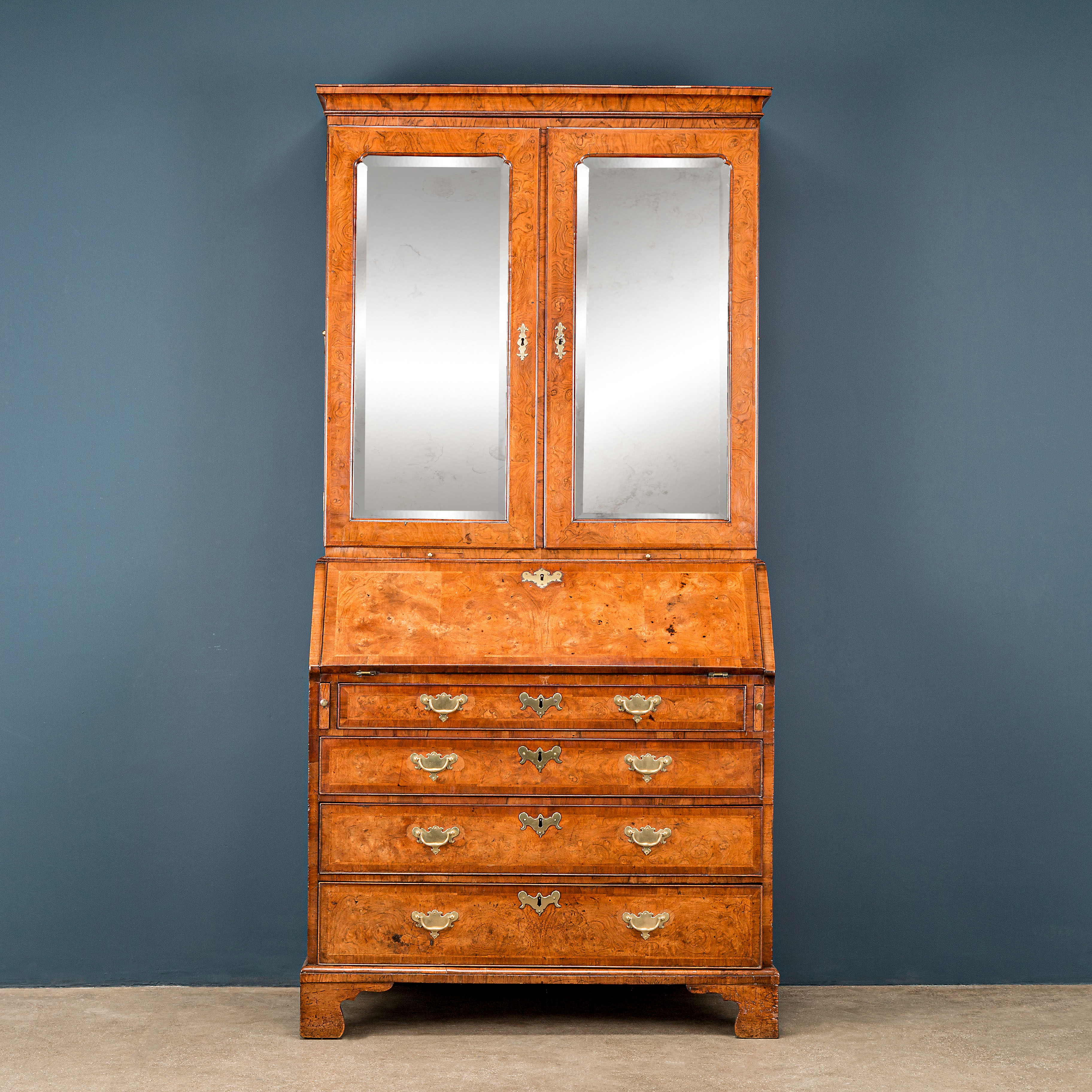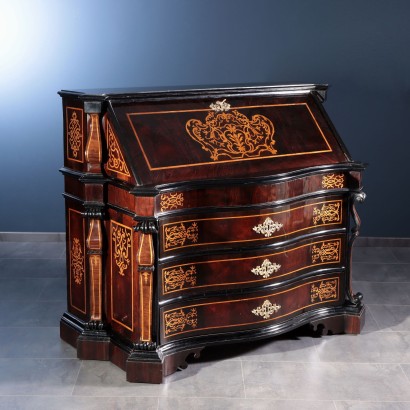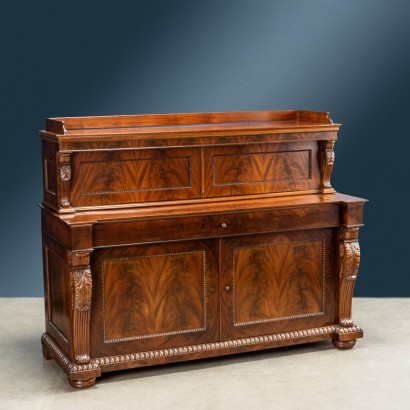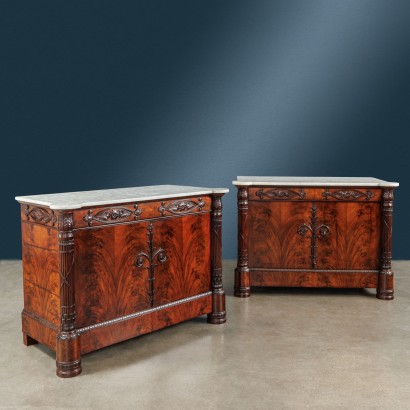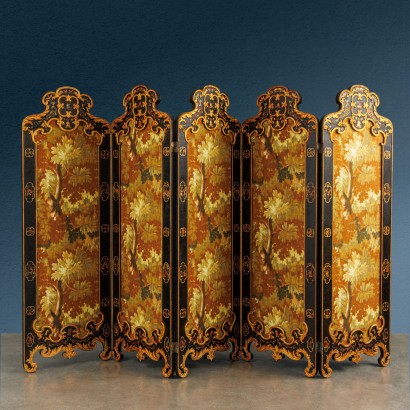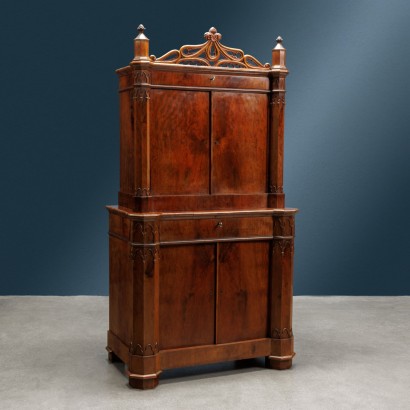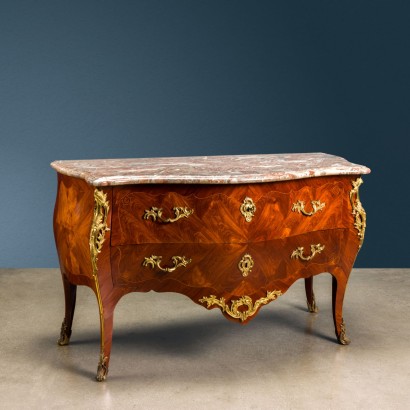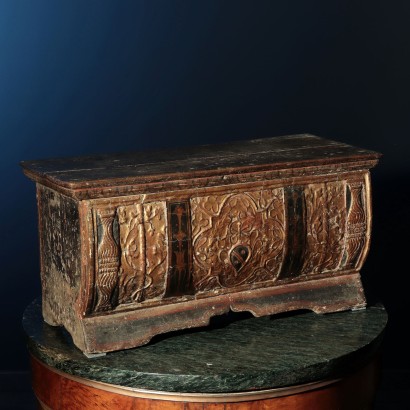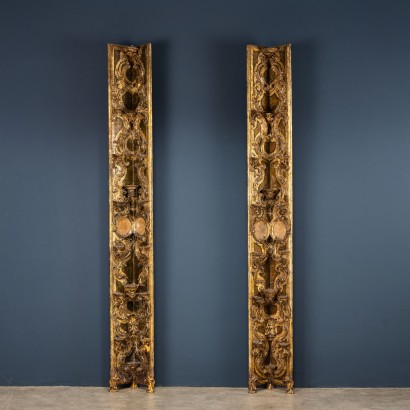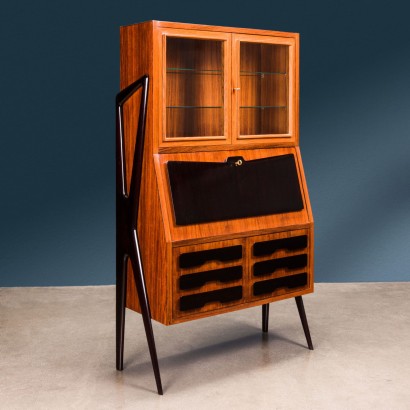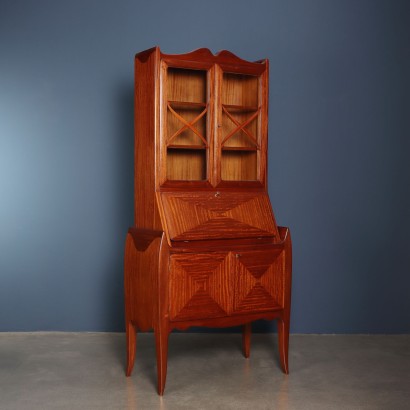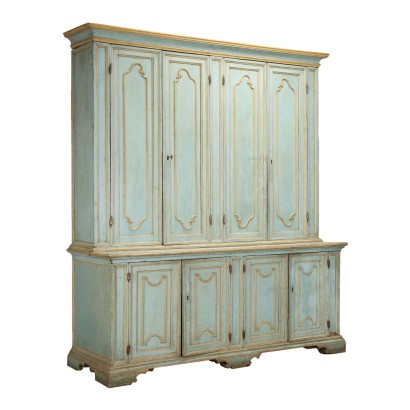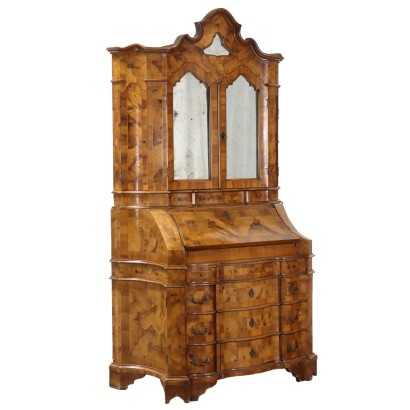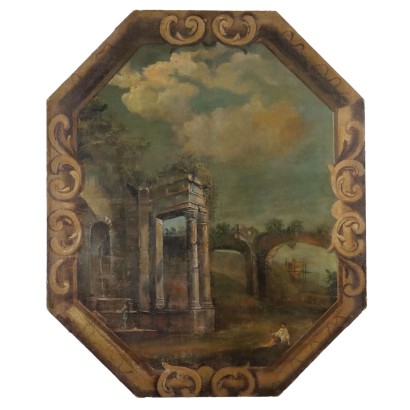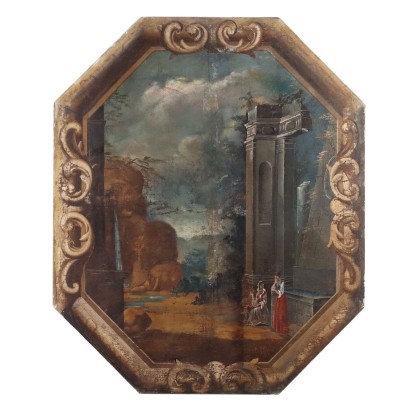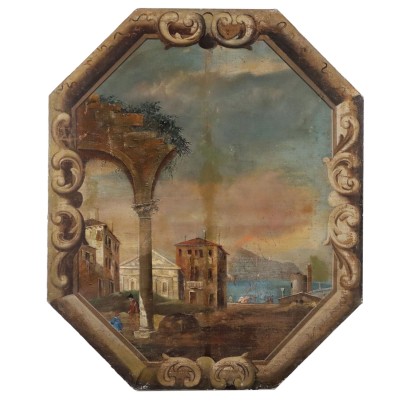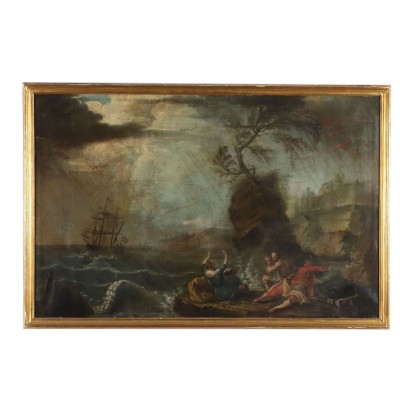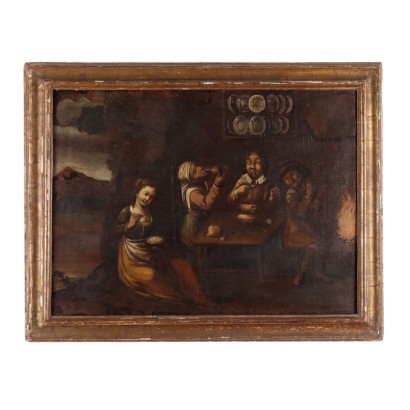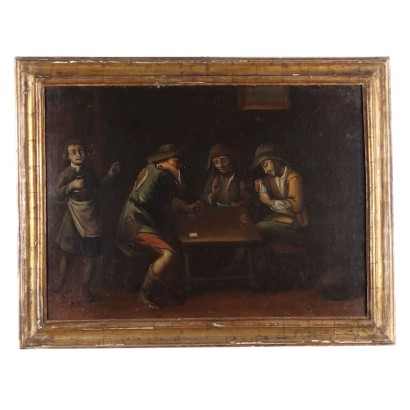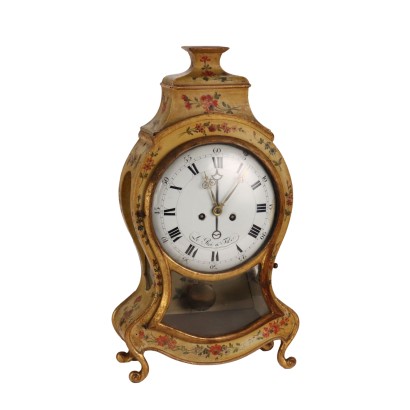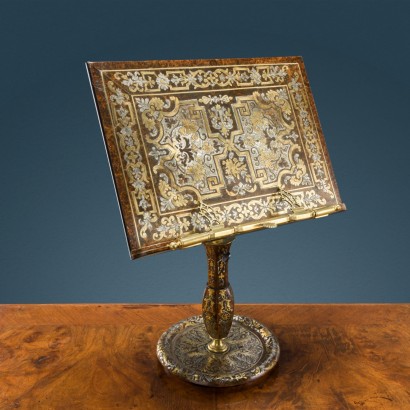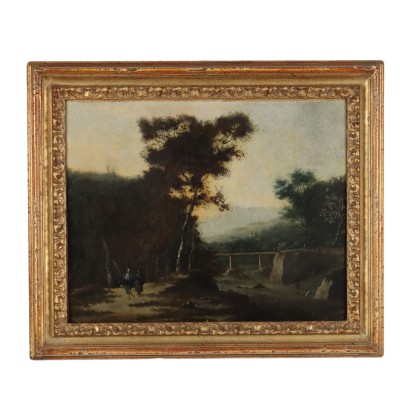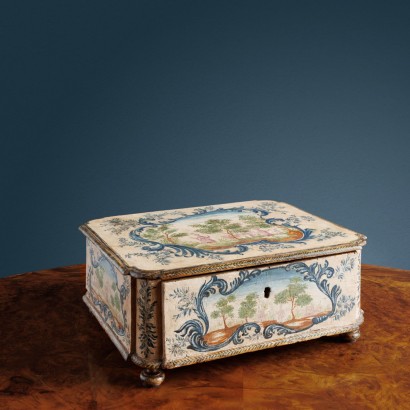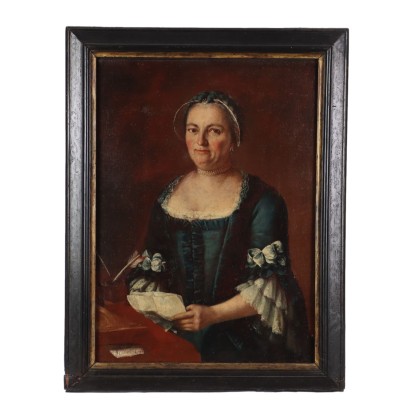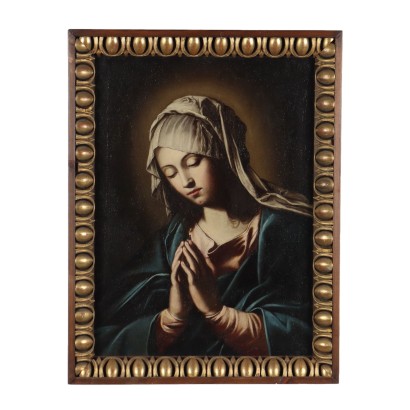Queen Anne Trumeau Walnut Oak Great Britain XVIII Century - England ca. 1705
Features
England ca. 1705
Style: Queen Anne (1702-1714)
Age: 18th Century / 1701 - 1800
Origin: England
Description
Large trumeau supported by carved cantilever feet, in the lower body it has three drawers plus one of reduced dimensions flanked by two drawers to support the upper opening flap door and concealing cabinet with drawers, document compartments and a central door. The upper body has two storage drawers surmounted by a pair of doors with mirrors, in which there is an architectural castle, with two tapered pilasters that frame two doors and two central drawers, on the sides two rows of drawers, while in the upper part various compartments for documents and a compartment in the upper part. There are also several secrets, such as the capitals of the pilasters, which can be pulled out in a drawer. Entirely veneered in briar walnut, while all the frames and carved columns of the interior are made of walnut worked "head"; it has characteristic nozzles and handles (these also on the sides) in gilded brass; oak interior. Present stamp "Fordham London".
Product Condition:
Product in good condition, with small signs of wear.
Dimensions (cm):
Height: 216
Width: 106
Depth: 57
Additional Information
Notes historical bibliographic
The library was built around 1705, finding full confirmation with the shapes that characterize the taste of this style. It is a high quality piece of furniture, entirely veneered in walnut briar to create a refined pictorial effect. If the oak interiors are a feature that will also be found in subsequent eras, the use of walnut in English furniture is a characteristic feature of the late seventeenth, first half of the eighteenth century, while from the second half of the century it will be increasingly replaced by mahogany, essence imported from the colonies, until its complete replacement in the nineteenth century.Style: Queen Anne (1702-1714)
The Queen Anne Style represents the first English Baroque that developed under the reign of Queen Anne of Great Britain (1702–14), only to be revived in the late nineteenth and early twentieth centuries.Age: 18th Century / 1701 - 1800
18th Century / 1701 - 1800Main essence:
Walnut
Walnut wood comes from the plant whose botanical name is juglans regia , probably originally from the East but very common in Europe. Light or dark brown in color, it is a hard wood with a beautiful grain, widely used in antique furniture. It was the main essence in Italy throughout the Renaissance and later had a good diffusion in Europe, especially in England, until the advent of mahogany. It was used for solid wood furniture and sometimes carvings and inlays, its only big limitation is that it suffers a lot from woodworm. In France it was widely used more than anything else in the provinces. In the second half of the eighteenth century its use decreased significantly because mahogany and other exotic woods were preferred.Oak
Under the name of oak or oak various types of woods derived from plants of the genus quercus are grouped. They are always resistant, hard and compact woods. Oak is lighter than oak, both are used for more rustic furniture or for the interiors of French and English antique furniture. In other processes it was gradually replaced by the advent of exotic woods considered more valuable since the 18th century.Other customers have searched:
Dai un'occhiata anche ai nostri approfondimenti sul blog e alle presentazioni dei prodotti FineArt:
Leggi di più
Un cassettone a ribalta, espressione del gusto veronese di pieno SettecentoSecrétaire, il mobile con i nascondigli
Scrittoio a dorso d'asino, Piacenza, metà XVIII secolo
Cassettone a ribalta, Roma, secondo quarto XVIII secolo
Ribalta a urna, Milano metà XVIII secolo
Secrétaire, Bottega Francesco Maggiolini, primo quarto XIX secolo
Secrétaire, “Bottega dei fondi verdi”, inizi XIX secolo
Trumeau con anta a ribalta, Queen Anne, Inghilterra 1705 ca.
Sull'antiquariato in generale dai un'occhiata anche a:
Classic Monday: da un pezzo dei nostri magazzini alla storia dell'antiquariato
L'antiquariato dalla A alla Z: il Dizionario dell'Antiquariato
Il dizionario dell'antiquariato - Lastronatura
Il dizionario dell'antiquariato - Mascherone
Il dizionario dell'antiquariato - Natura morta
Il dizionario dell'antiquariato - Opificio
Il dizionario dell'antiquariato - Pastiglia
Il dizionario dell'antiquariato - Savonarola
Il dizionario dell'antiquariato - Rosone
Intaglio barocco con motivo a ricciolo
Product availability
The product can be seen at Cambiago
Immediate availability
Ready for delivery within 2 working days from ordering the product.

